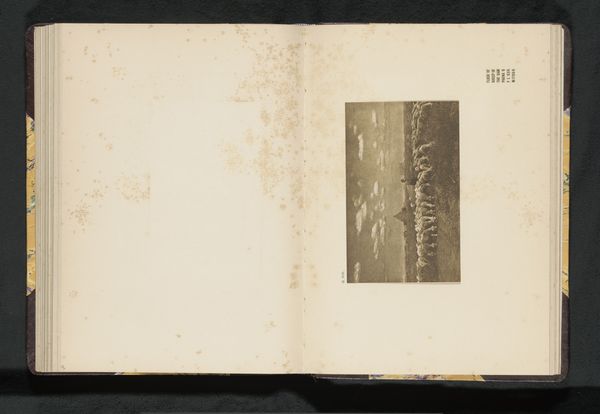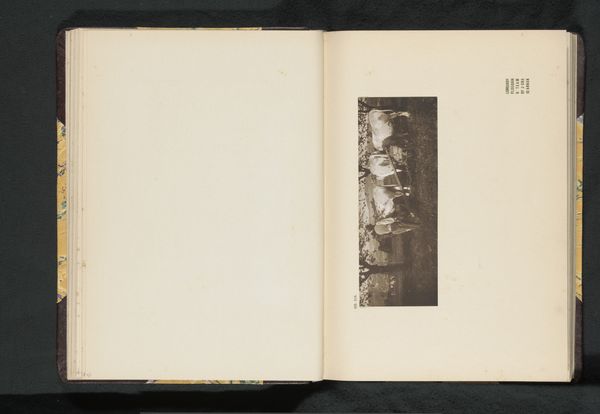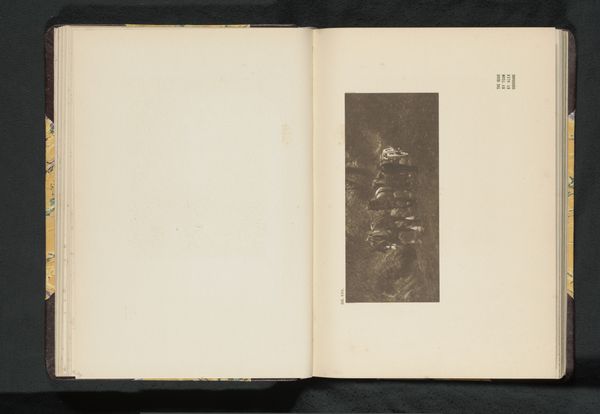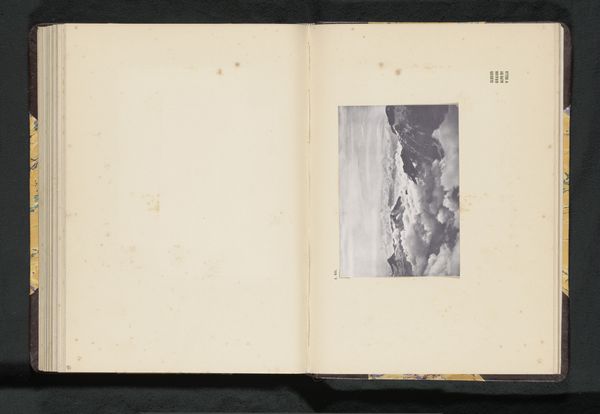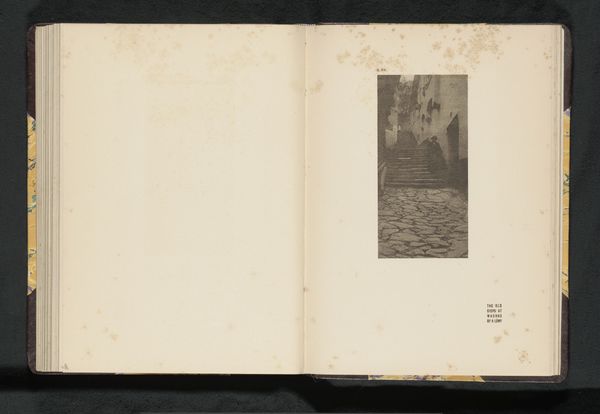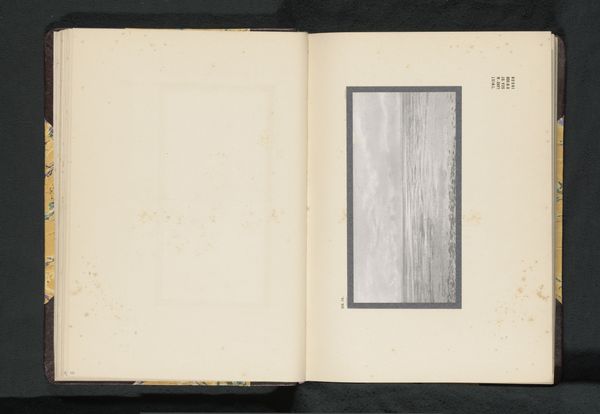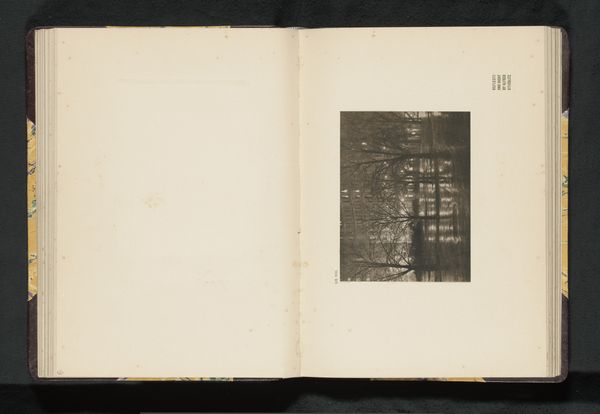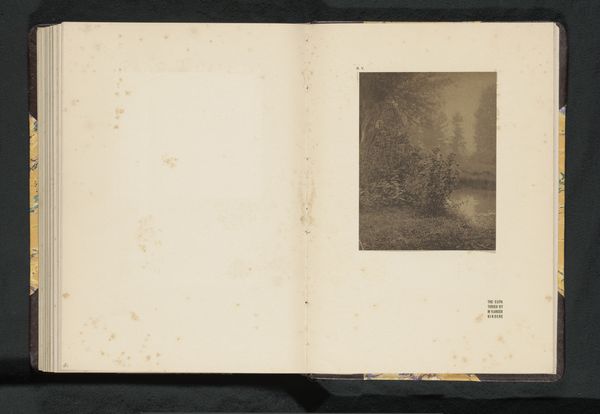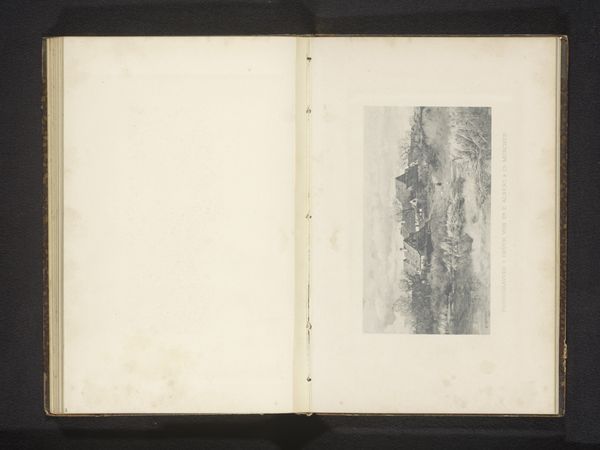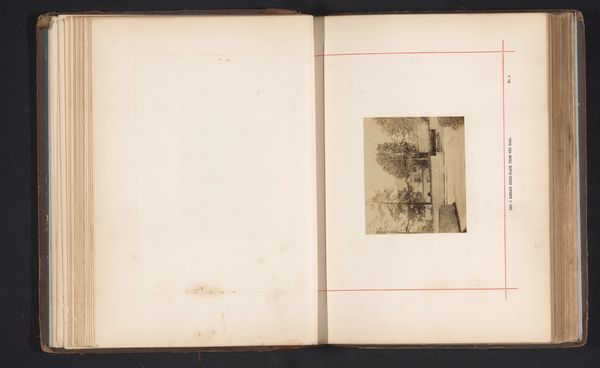
Dimensions: height 109 mm, width 152 mm
Copyright: Rijks Museum: Open Domain
Curator: We’re looking at "Silhouette of London with Saint Paul's Cathedral" by Walter Benington, believed to be created before 1905. It’s a print using ink on paper, presenting a compelling cityscape. Editor: The overwhelming impression for me is one of quiet industrial dread, if that makes any sense. The composition, predominantly greyscale, really emphasizes the imposing structure of St. Paul's against what seems to be a bleak urban sky. Curator: It does make sense when you consider the period. Benington created this at a time when London was the heart of the British Empire, grappling with unprecedented industrial expansion and societal changes. The stark contrast perhaps mirrors that unease. Notice the stark, skeletal silhouette of what appears to be train tracks dominating the foreground? Editor: Exactly! The linear precision of those train tracks almost clashes with the softer, almost impressionistic rendering of the cathedral. It creates an interesting tension between modernity and tradition. Is Benington intentionally contrasting them? Curator: That's a rich interpretation. It aligns with how some critics view art from this period as a reflection of anxiety toward technology disrupting traditional social structures, but it's also drawing on ideas about London itself, a place remade and still under construction, especially with reference to race. Were the possibilities created by the railways open to everyone? Editor: It also directs my eye right toward the more atmospheric rendering of St Paul's and other distant building in the fog of the background.. What’s so compelling is the flatness of that background horizon line; it renders everything into near-abstract shape. The composition is actually masterful at creating depth without relying on conventional perspective. Curator: And, this 'orientalism', how could it be argued it is apparent here? Look closely and notice what that means as London’s power was expanding rapidly across the world and even internal dynamics shifted within England, too. It invites discussion of race, social power, and identity in rapidly modernizing environments, it isn't accidental I would suggest. Editor: This piece encourages an engaging dialogue, particularly examining how the intersectionality of race and technology affect our readings, as we bring new levels of awareness. Thank you for opening it to such possibilities. Curator: Agreed. It highlights the value of interpreting the interplay of formal elements, context, and those narratives within it. It is really the best way to approach artwork, at least for me.
Comments
No comments
Be the first to comment and join the conversation on the ultimate creative platform.
